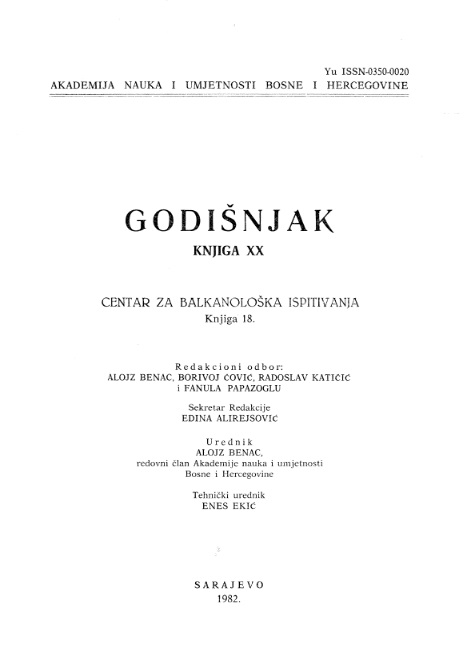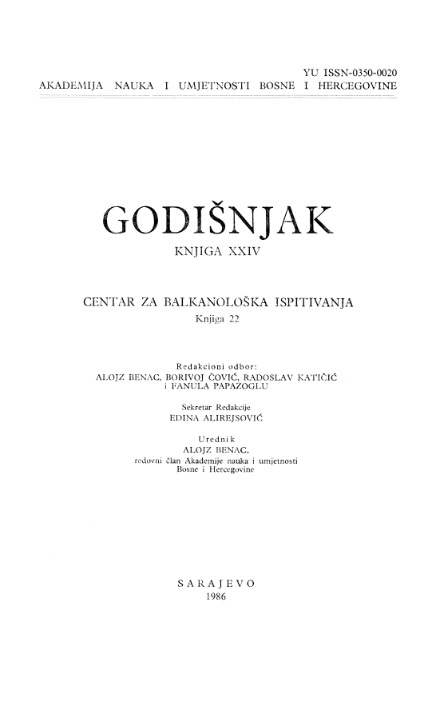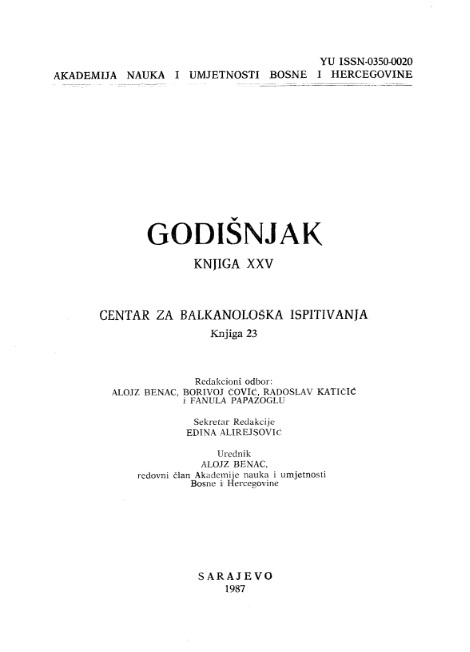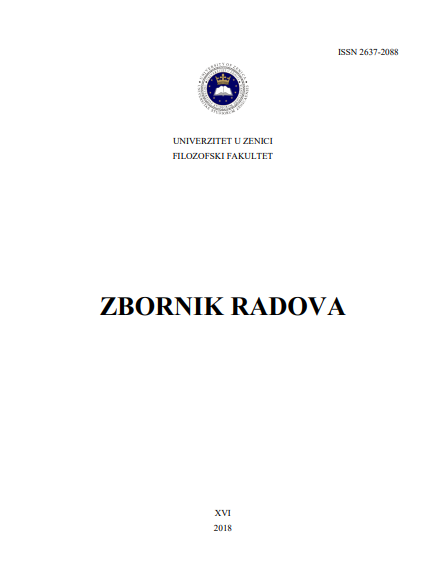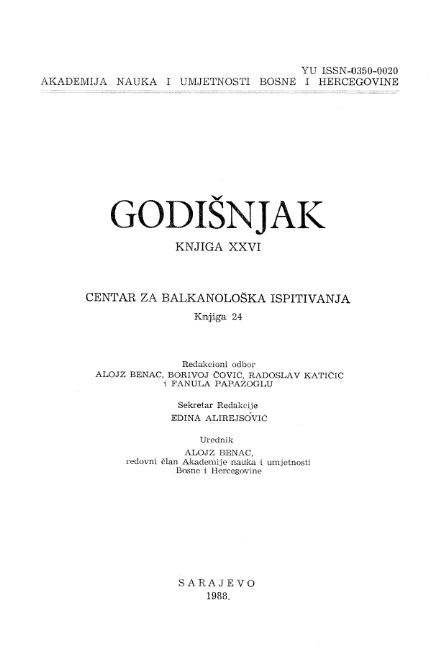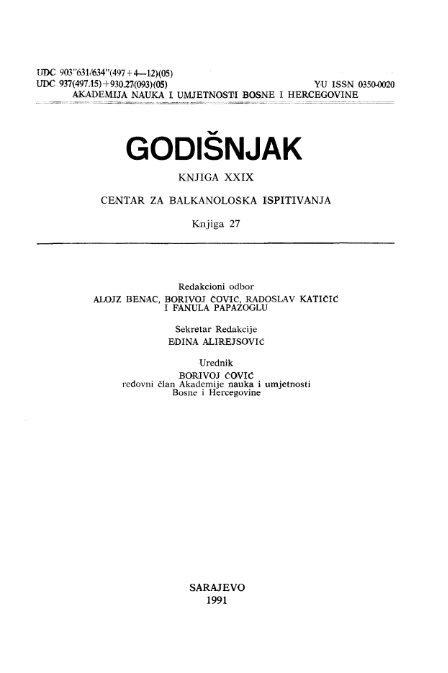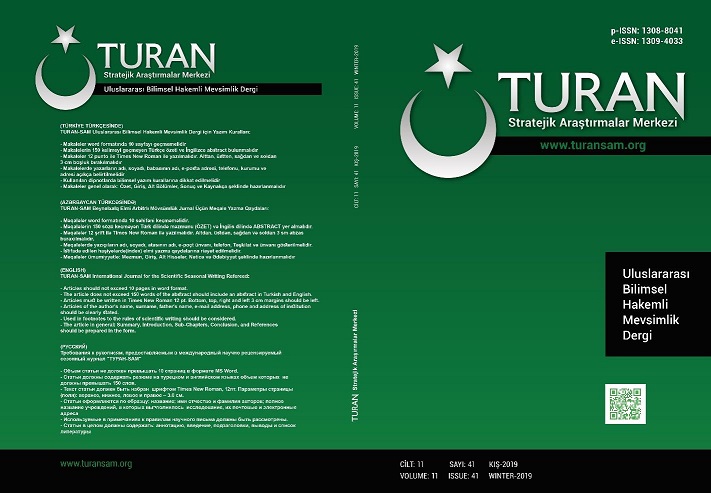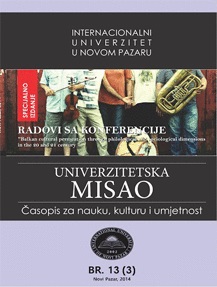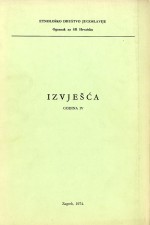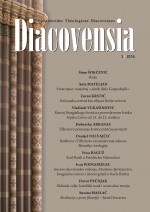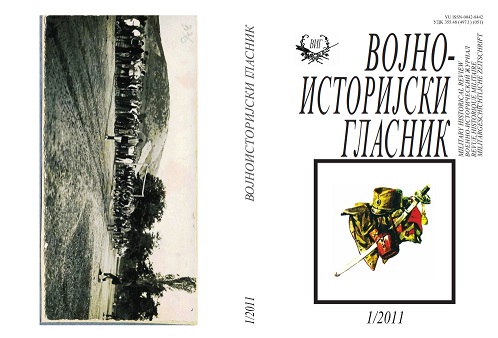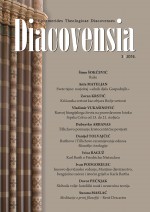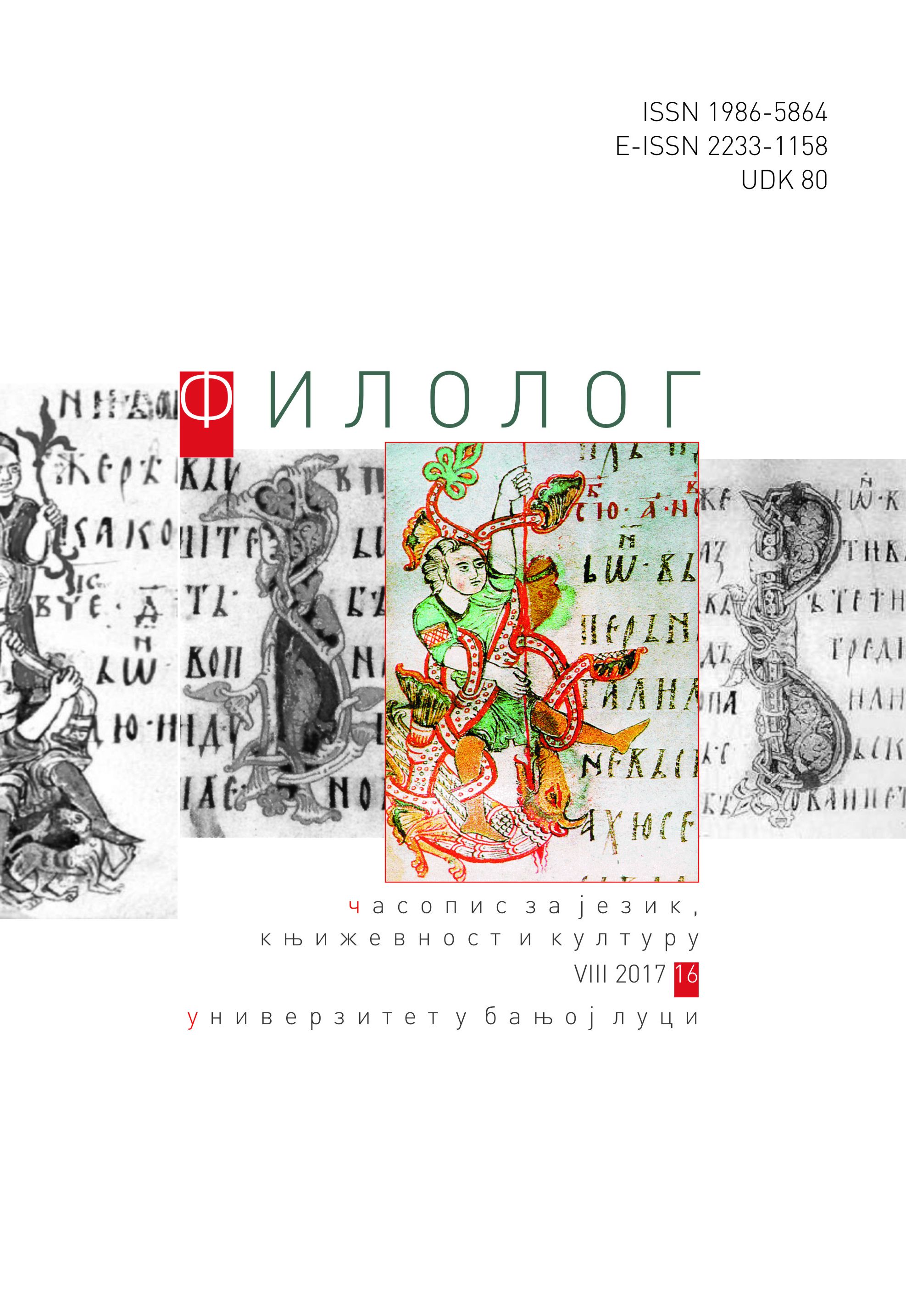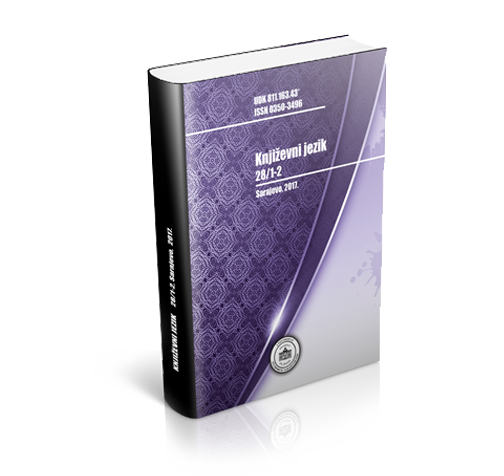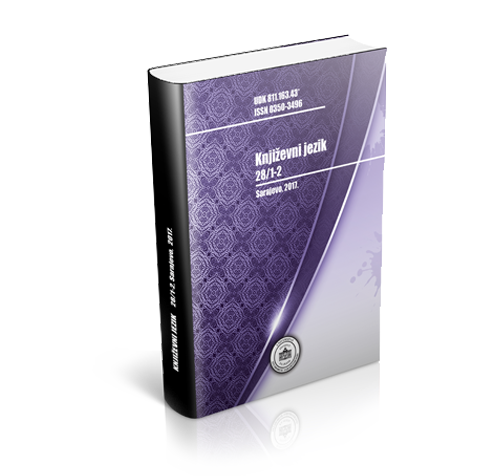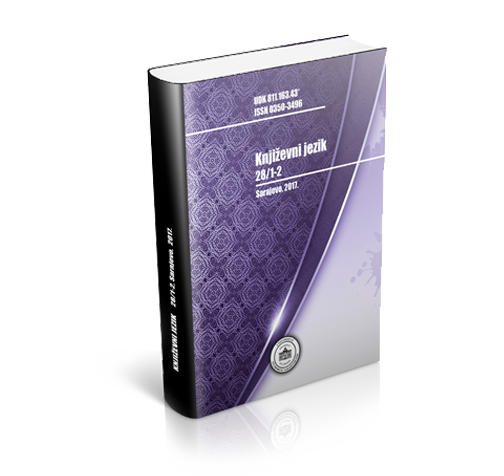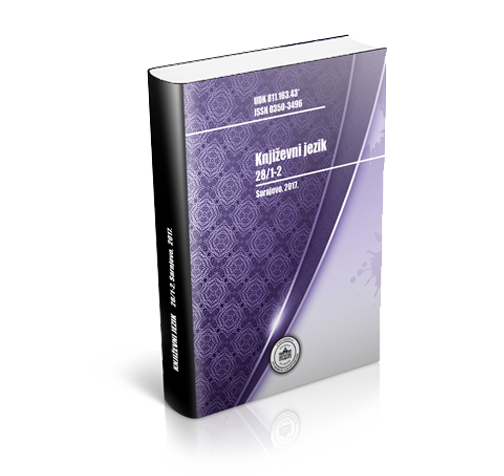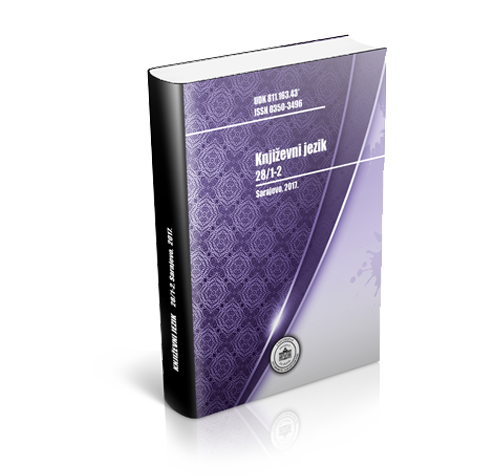Author(s): Petar Hr. Ilievski / Language(s): Serbian
Issue: 25/1987
The texts of the Linear B tablets, with their poor contents, give us only a faint picture of Mycenaean society. Data extracted from numerous Mycenaean personal- and place-names could throw some extra light. Although the interpretation of many names is doubtful, and a certain number of them still remain unidentified, hundreds of others may provide pieces of information valuable not only for the historical development of the Greek language, but also for the reconstruction of the Mycenaean world. The aim of this paper is to explore whether land-holding relations have left any traces in Mycenaean toponymy. Therefore, its main subject is the interpretation of place-names composed” of the juxtaposition of personal names in the genitive and the appellatives wo-wo/(-)wo-wi-ja, of the type: Ke-ra-ti-jo-jo wo-wo, O-re-e-wo wo-wo, etc., and Ko-ro-jo-wo-wi-ja, Ru-ke-wo-wo-wi-ja, Ne-wo-ki-to wo-wi-ja. It is noticaeble that all the place-names with wo-wo/(-)wo-wi-ja (about a dozen) come from Pylos, and denote places in Messenia. In the Knossos tablets the word wo-wo appears twice separately as the personal name of a shepherd, and da-i-wo-wo — as a compound personal name of a po-ti-ro (probably pontilos ‘sailor, mariner’). Thus, the place-names formed from a man’s name in the genitive + wo-wo are typicall Pylian. first the etymology of the worn wo-wo is scrutinized. Among several different interpretations, The identification of wo-wo (worwost with Attic ‘boundary’ seems most probable. The original meaning of 'furrow', related to Latin tirvus, amb/urvare (cf. P. Chantraine, DELG, s. v.). The term of profession wo-we-u, derived from wo-wo, the same as ka-ke-u ikhalkeusi from ka-ko ikhalkosj, ke-ra-me-u I kerameusl etc., very likely contains the original meaning of wo-wo. The Mycenaean word wo-we-u is identified with Attic, Ionic, Horn. ’mule’ that ploughs furrows, ‘sulcator’ acording to Schulltze (Qu. Ep. 407). As the terms for hard agricultural work are usually common both to domestic animals and men, wowe- u /worweus might also denote ‘ploughman’. The development of the meaning of the singular form .wo-wo iworwos/ furrow, boundary’ and the plural wo-wo-ja worwial ôpia ‘terrain’ is similar to that of Latin finis and lines: ^poc^ boundary, landmark, limit’ in both a real and an abstract sense, and the plural opux, a collective ‘boundaries, boundary terrains’ = Latin fines ‘(frontier) region’, Slavonic kraj (= finis), plur. krajevi (= fines). Later the meaning of the plural form was transferred to the singular too. (Slav. kraj ‘region’). It is supposed that in Mycenaean such a meaning of wo-wo was also developed. In the Mycenaean texts there is another type of place-names, compounds with a-ko-ro (agrosj /a-ki-ri-ja iagria/-a-ke-re-u jagreus/ formed in a similar way. to those with wo-wo!(-)wo-wi-ja. In a comparison between these two types of place-names, some morphological differences are obvious. While wo-wo is . preceded by a personal name in the genitive, a-ko-ro follows an adjectival form, derived usuailv from another place-name, e. g. Pa-ki-ja-ni-jo a-ko-ro Sphagianios agrosl, etc., and denotes the territory or region of the places concerned. In ultima tinea both types denote terrains which belong to somebody or something: wo-wo fopfoç ‘boundary of arable land’, and a-ko-ra ‘uncultivated land pastures, and woods', cf. PY Vnl0.4 Ro-u-si-jo a-koro ILousioi agroil du-ru-to-mo Jdrutomoi/ Spu-ropoi have to cut 100 e-pi-pu-ta lepiphutal 'saplings' for 100 a-ko-so-ne ovec, and to deliver them to a-mo-te-jo-na-de Iharmoteona- del ‘to the wheelwrights’ workshop'. In the Slavonic languages toponyms of this kind are also formed with case-forms (the genitive, or the possessive dative), or with an adjective derived from personal- or place-names. The Mycenaean place-names formed from a personal name and the appellative woo-wo Jworwos/ ‘boundary’ are especially indicative. They reflect the situation of a society with individual possession of land. But place-names usually reflect a reality of the past. A certain time should pass before appelatives become toponyms. Therefore the chronology of these toponyms is examined in the paper. The analysis of the personal names in front of wo-wo shows that two thirds of them (8 out of 12 altogether) can be easily explained as Greek: E-u-tare- wo w. lEuthalëwosI, cf., Ke-ra-ti-jo-jo w. a patronymic of Kepcfcrvriç; Ko-ro-jo w., possibly Koroio, gen. from Kopoç- ‘surfeit’, Kholoio from Tame’, or Khoiroio from, ‘young pig'; Me-ka-o , corresponding to Slavonic Velko, Veličko, Vetimir, etc. O-re-e-wo w., gen. of Oreheus, cf. also /Orehas/, compared with O-re-ta /Orestas/ : O-re-te-wo /Orestewos/. In the Slavonic languages there are similar variants: Goran, Goreta, Goriša, derived from the same stem with different suffixes; Ruke-wo w. /Lunkèwosl, gen; U-po-di-jo-no tv. IHupodionosI, gen. of Hupodiôn; Wa-no-io w. /Wargoio/ from ap-qv, ‘lamb’. Two of them are possibly Greek too: Mo-ro-ko-w. and Newo- ki-to in juxta-position with wo-wi-ja, and two, Ka-pe-se-wa-o and Re-qa-se-wo, which cannot be explained as having a Greek etymology, are obviously of non- Greek origin. Both philology and archeology infer that the Greeklanguage developed through the mixure of a group of Indo-European speaking newcomers with an earlier population in Greece. This group of Indo-Europeans penetrated into Greece at the beginning of the second millenium B. C., but the process of mixing their languages could not be accomplished so quickly. At least three to four centuries are necessary for such a coalescence. The seventeenth century B.C. can be taken as the approximate terminus post quem, when place-names compounded with proper Greek personal names and wo-wo began to appear. But microtoponyms of this kind are also often related to contemporary people. Thus, some placenames which denote the boundaries of somebody’s land, may reflect a situation of pre-Mycenaean times, but some of them, named after Mycenaean people, reflect a contemporary state of affairs. On the basis of the tablets of the E series from Pylos it has usually been thought that in Mycenaean times the land was divided into two sectors: a. ki-time- , explained as ‘settled’, i. e. ‘private land’. In fact, this land originally belonged to the king or to the temple. The palace administration, or wanax itself had distributed this land to a certain number of citizens, te-re-ta Itelestail for some services, and the telestai had subdivided their portions among other subtenants, b. ke-ke-me-na Ikekhemena/ ‘abandoned’, i. e. left unploughed, or ‘communal’, which was at the disposal of dâmos. In the Knossos tablets, where some slaves and oxen for work are qualified as da-mi-jo Ipa-ro da-mot, i. e. belonging to da-mo Idamosl, one can conclude that at least a part of the communal land was tilled with collective work. Another part, of ke-ke-me-na land, as we can see from the Pylos E series, was distributed to some individuals by the dâmos. However, we must bear in mind the fact that the Pylos tablets of the E series do not contain evidence for the whole land but only for the territory which belonged to the palace and the temple at Pa-ki-ja-ne, near the palace. That is in fact about 10% of the arable land necessary to feed the inhabitants of the kingdom. A question spontaneously arises: who else possessed land? I have already suggested (Evidence for Land-Holding Interrelations on the Balkans in the Late Bronze Age, Godišnjak Centra za balkanološka ispitivanja, ANUBiH, Sarajevo, 1985, 33, 40) that along with these two sectors of land (ki-time- na and ke-ke-me-na), another private sector must have existed, as in Ugarit. The land of that sector was not disposed of by either the wanax or the dâmos, but acquired by clearing the terrain, bought, inherited, received as gift, or similar.
More...
